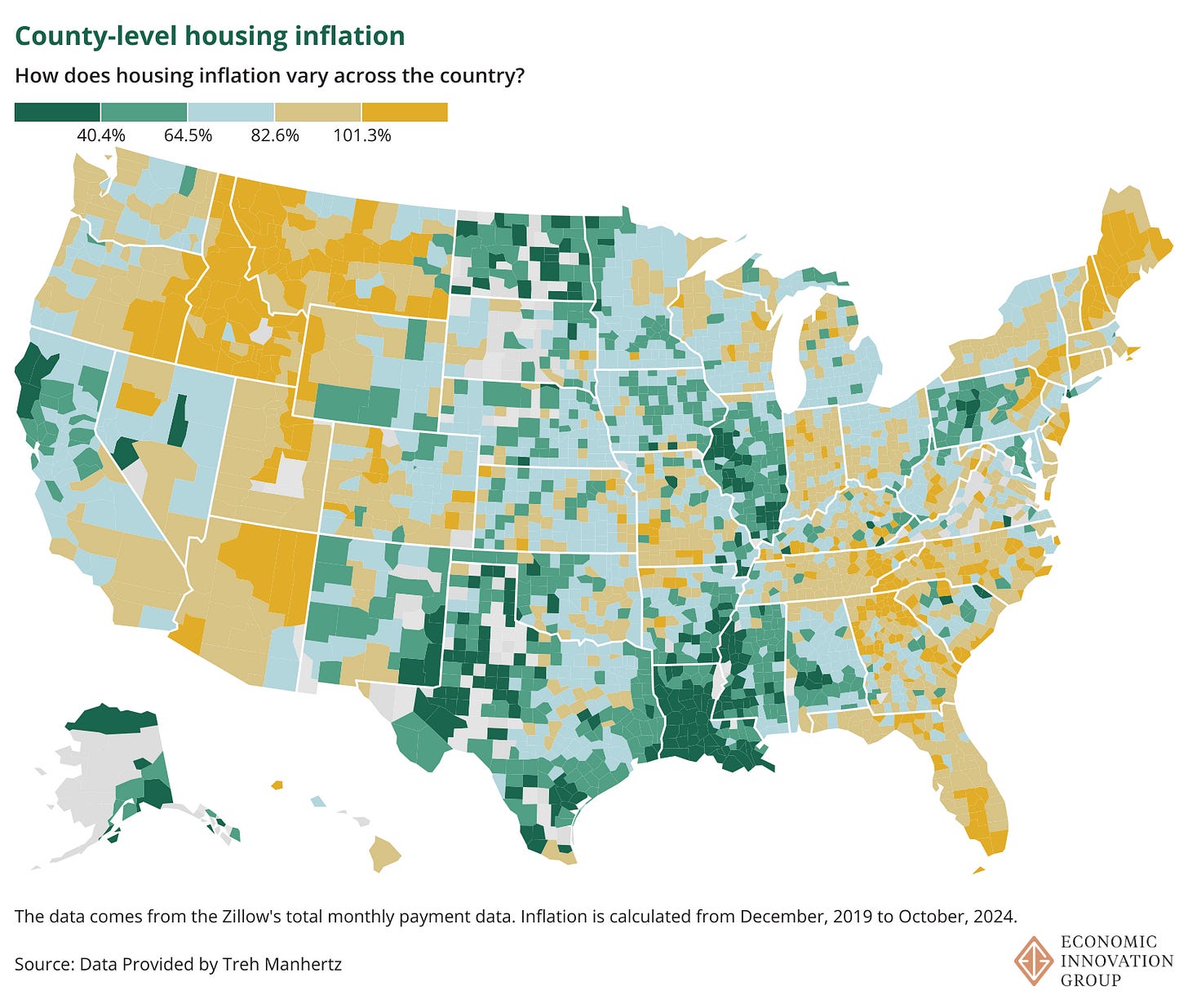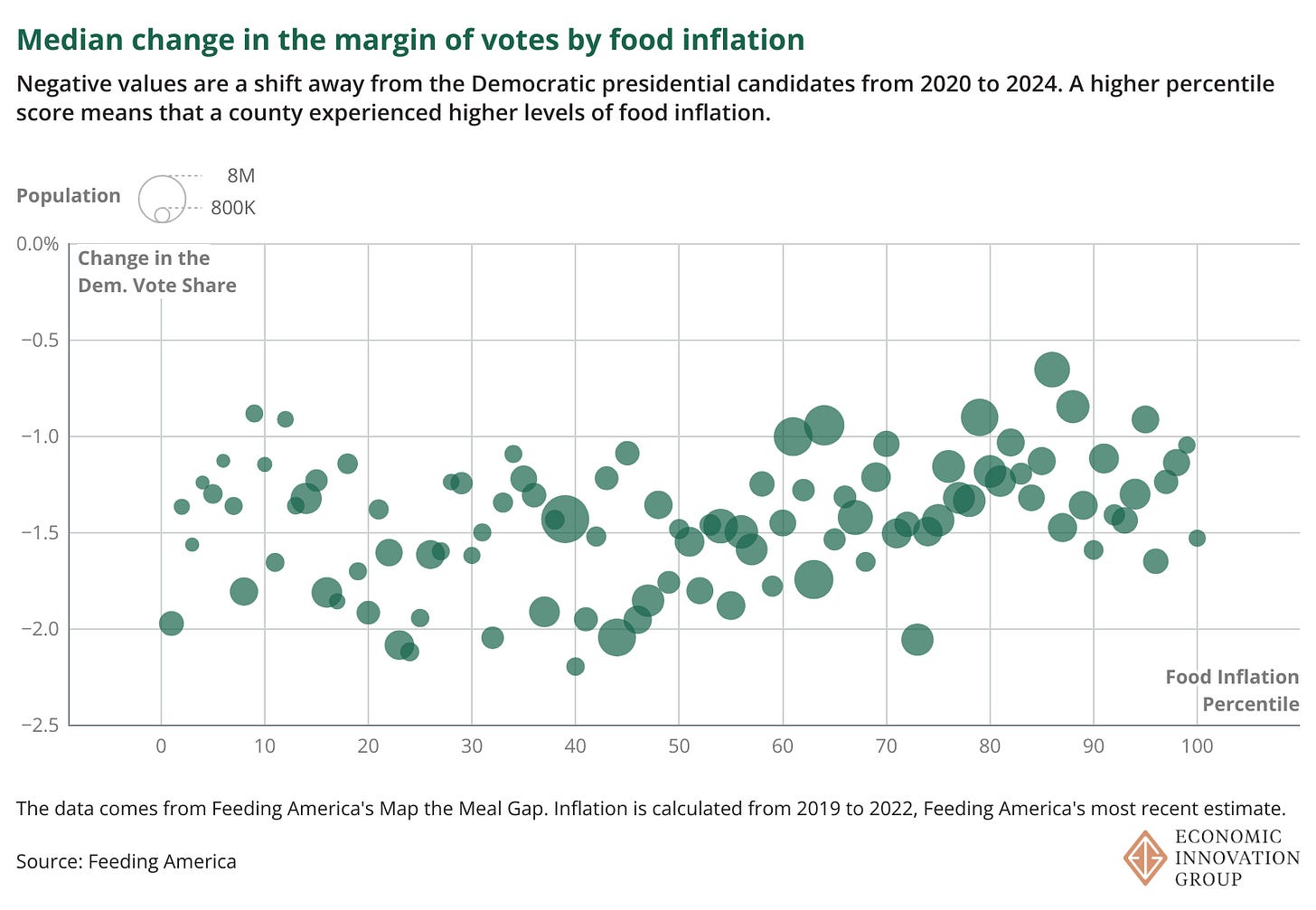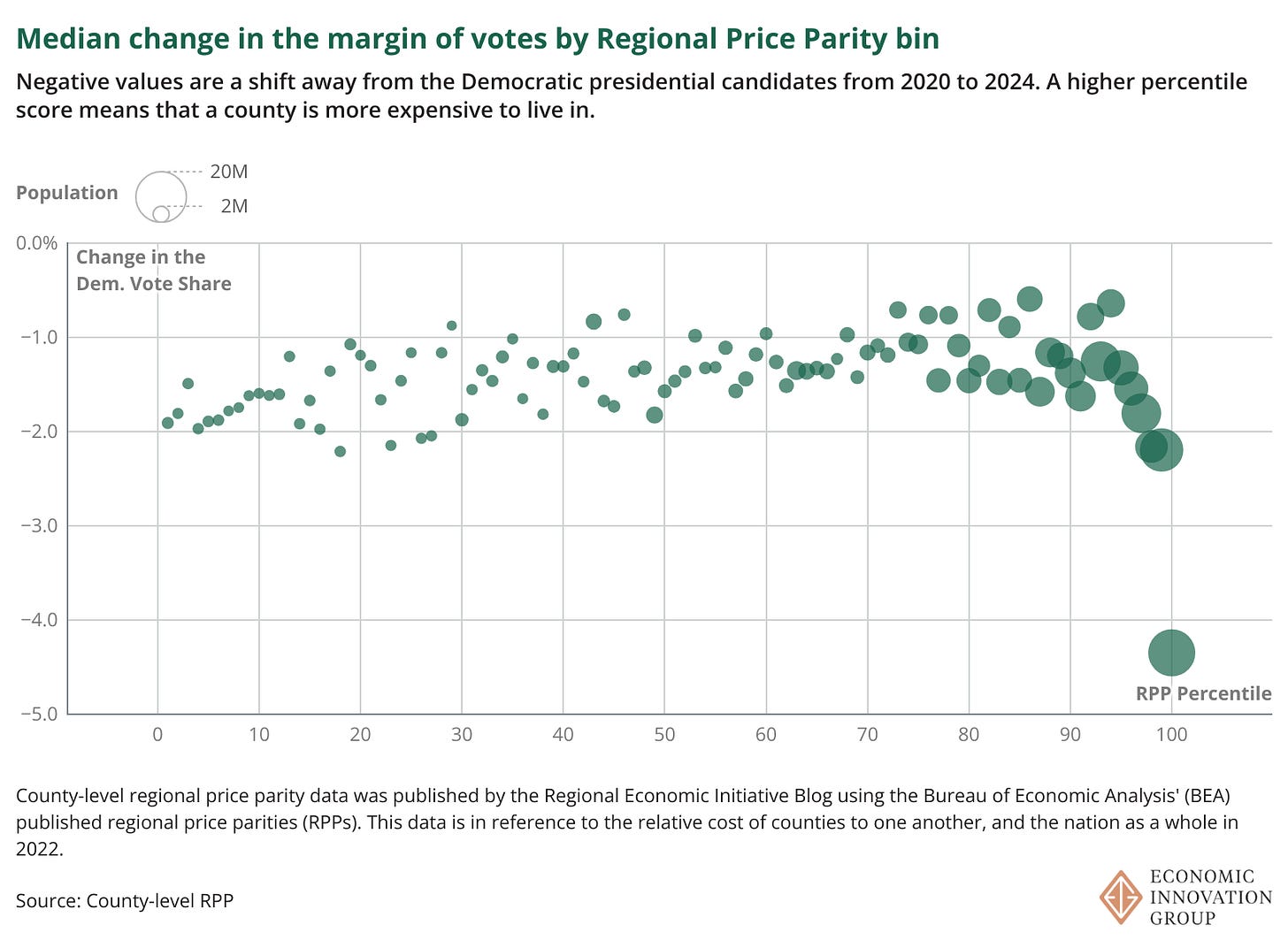Voters hate inflation, and this fact by itself is enough to explain the defeat of Kamala Harris and the Democrats in the 2024 elections — just as it explains the recent toppling of so many incumbent parties and politicians in other countries.
That reasoning quickly became part of the conventional wisdom in the immediate aftermath of Election Day. And although we think it’s mostly right, we also find that it comes with a geographic mystery.
Inflation is not the same everywhere across the United States. Since the end of 2019, right before the onset of the pandemic, prices in some areas grew much faster than in others. Given how much voters hate inflation, you might then assume that the specific places where it bit the hardest would also be the places showing the biggest voter retreats away from the Democrats.
But that is not what happened. The voter shift from Democrats to Republicans was largely uniform, uncorrelated with the differing inflation rates from place to place.
Start with these two charts. The first shows housing inflation by individual county from the end of 2019 through the last month before the election, October 2024:
The second chart shows food inflation from the end of 2019 through the end of 2022 — the most recent period for which the data is available, and which also includes the most inflationary period of the pandemic.
Food inflation and housing inflation both varied dramatically across the United States.
Food prices climbed fastest throughout the Midwest’s urban and suburban counties from 2019 to 2022. Housing inflation from 2019 to 2024 was highest among the Northeast’s mid-sized urban counties, followed closely behind by urban counties in the West and South.
For both kinds of inflation, however, the decline in the vote share for Kamala Harris in 2024 (relative to the Biden vote share in 2020) was remarkably consistent throughout the country. There was almost no difference between counties with the highest inflation rates and those with the lowest. The lack of any discernible pattern is obvious in the next two charts.
Inflation was everywhere too high for voters’ liking. But the election results also suggest that too high was the same as way too high, which was the same as way way too high, and so on.
Why did voters in the counties that suffered the worst inflation not flee the Democrats in bigger hordes than voters in places with lower inflation? The answer is unclear, though maybe a definitive explanation will emerge in time, as we learn more details about the election results.
One possibility is that voters simply do not experience inflation with much precision. They regard it in binary terms: Inflation is either too high or it’s out of mind. Once prices are climbing at a rate they find unacceptable, they consider it a policymaking failure. Whether inflation then peaks at 6 percent or continues to 9 percent makes little further difference to voting behavior. The voters willing to flip their vote to a different party have already done so.
Separately, we did notice a significant geographic difference when looking at how the cost of living differs throughout the country. (The chart below shows a static snapshot of how the decline in the 2024 Democratic vote share relates to the differences in costs of living between counties as of 2022. It does not show inflation, which is the change in costs of living.)
The biggest declines in vote shares for Harris took place in the most expensive and most populous counties. Why?
One possible, straightforward reason is the intense dissatisfaction of residents in the biggest cities, which tend to be locally ruled by Democratic mayors and politicians. Democrats may also have disproportionately moved away from these areas after the pandemic, though we have no data to support this trend. Still another reason could be that these cities are home to large populations of the demographic groups that moved towards Donald Trump in the election.
Finally, the inflation that affected the whole country may have given voters in big cities an especially bad case of sticker shock. (Inflation of 9 percent in the cities with the highest cost of living results in bigger absolute price rises than in cheaper cities.)
We just don’t yet know. Whatever the reason, it is in these places — and only in these places — that higher price levels were correlated with a stronger movement away from Democrats.









